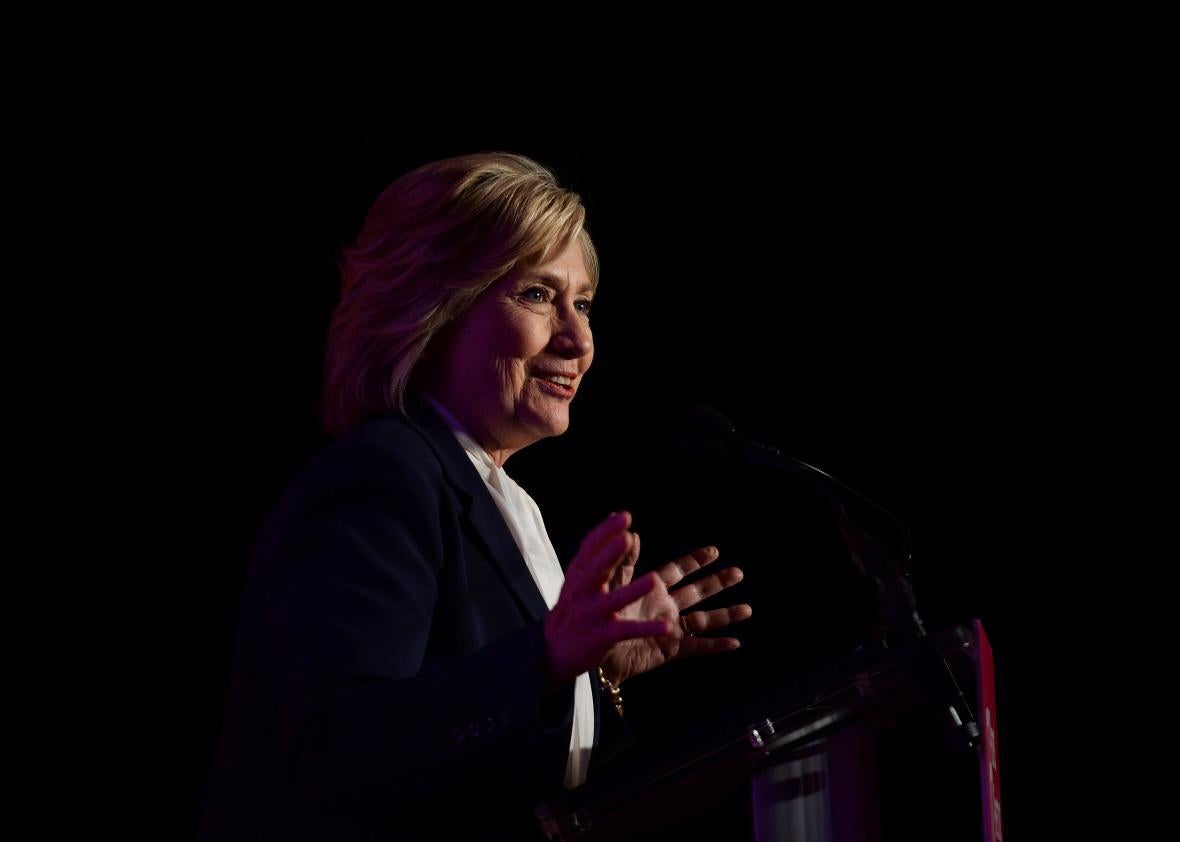As she accepted Planned Parenthood’s first-ever presidential primary endorsement at a New Hampshire rally on Sunday, Hillary Clinton recited a list of economic and social barriers that prevent women from obtaining abortions. She said:
Any right that requires you to take extraordinary measures to access it is no right at all. Not when patients and providers have to endure harassment and intimidation just to walk into a health center. … Not when providers are required by state law to recite misleading information to women to shame and scare them. And not as long as we have laws on the book like the Hyde Amendment making it harder for low-income women to exercise their full rights.
The Hyde Amendment, a rider that’s been tacked on to every annual appropriations bill since 1976, bans the use of federal Medicaid funds for abortion except to save the life of the pregnant woman or in cases of rape or incest. Though it’s not ratified law, it’s been treated by some as a foregone conclusion and thus avoided the kind of organized protests that have accompanied more recent restrictions of abortion rights. Clinton’s call-out of the amendment points to strides made by the reproductive justice movement, which has for years worked to expand a limited pro-choice, abortion-centered framework to include other human rights issues, especially those that disproportionately affect marginalized communities.
“We are thrilled that pro-choice champions are no longer accepting the Hyde Amendment as the status quo,” Kierra Johnson, executive director of Unite for Reproductive & Gender Equity, told Slate in an email. “The young people that we work with recognize that abortion may be legal, but the decades of political interfering have made it almost impossible for some to access. We should not be interfering with anyone’s personal decision because of how much they earn, how they are insured, their age, or where they live.” URGE and other reproductive justice organizations have rallied behind the Equal Access to Abortion Coverage in Health Insurance (EACH Woman) Act of 2015, which would include abortion coverage in federal health insurance plans, including Medicaid, and remove barriers to public funding in other plans.
Though it first passed in 1976, the Hyde Amendment found itself at the center of the 2010 health-care reform debates. Back then, Rep. Bart Stupak insisted that the health care bill the Senate passed allowed for taxpayer-funded abortions. It didn’t, mainly because Hyde still applied. But Stupak’s persistent complaints, which could have derailed reform efforts by convincing other pro-lifers to pull their support, got Barack Obama to issue an executive order requiring that insurance policies that cover abortion keep federal funds separate. That kind of segregation of funds is such a resource-intensive hassle, it’s enough to discourage some providers from offering abortion coverage at all.
Congressional Republicans have voted to codify Hyde’s provisions as law but, as Timothy Noah writes, they’ve kept quiet about it.
A common misconception is that the government’s ban on abortion funding through the Hyde Amendment…has the force of permanent law. It does not. It is merely a rider routinely attached to annual appropriations bills. Should the appropriations committees in Congress decide one year not to attach it, then [Department of Health and Human Services] will become free to fund abortions. Pro-lifers live in fear that this will happen, but they don’t want to draw too much attention to the possibility, lest they discourage the public from thinking the Hyde Amendment is writ in stone.
Just 17 states provide public funding for low-income women seeking abortions, 13 of which have been ordered by courts to do so in order to stay in line with their respective state constitutions. South Dakota doesn’t even go as far as the Hyde Amendment; it forbids the use of public funds even in cases of rape and incest. The Hyde Amendment itself forbids Medicaid from funding an abortion for a woman whose pregnancy is detrimental to her health, but not explicitly life-threatening. Hyde culture has permeated new programs too: The Children’s Health Insurance Program (CHIP), for one, bans the use of federal funds for abortions sought by teenagers.
If Clinton makes the Hyde Amendment a 2016 campaign issue, it will be a long-overdue step toward addressing the intersection between economic insecurity and reproductive health. Studies show that poor women take up to three weeks longer than other women to secure an abortion, in part because she needs time to come up with the money. But the further along the fetus, the more expensive her abortion will be and the more likely she is to experience health complications. Hyde has influenced new health programs, too. Poor women have long been used as poker chips in political debates over abortion, and lawmakers have used their power to stymie women’s health care access as a way to prove their anti-choice chops. “I certainly would like to prevent, if I could legally, anybody having an abortion, a rich woman, a middle-class woman, or a poor woman,” amendment namesake Henry Hyde said in a 1977 discussion on Medicaid funding. “Unfortunately, the only vehicle available is the…Medicaid bill.”
